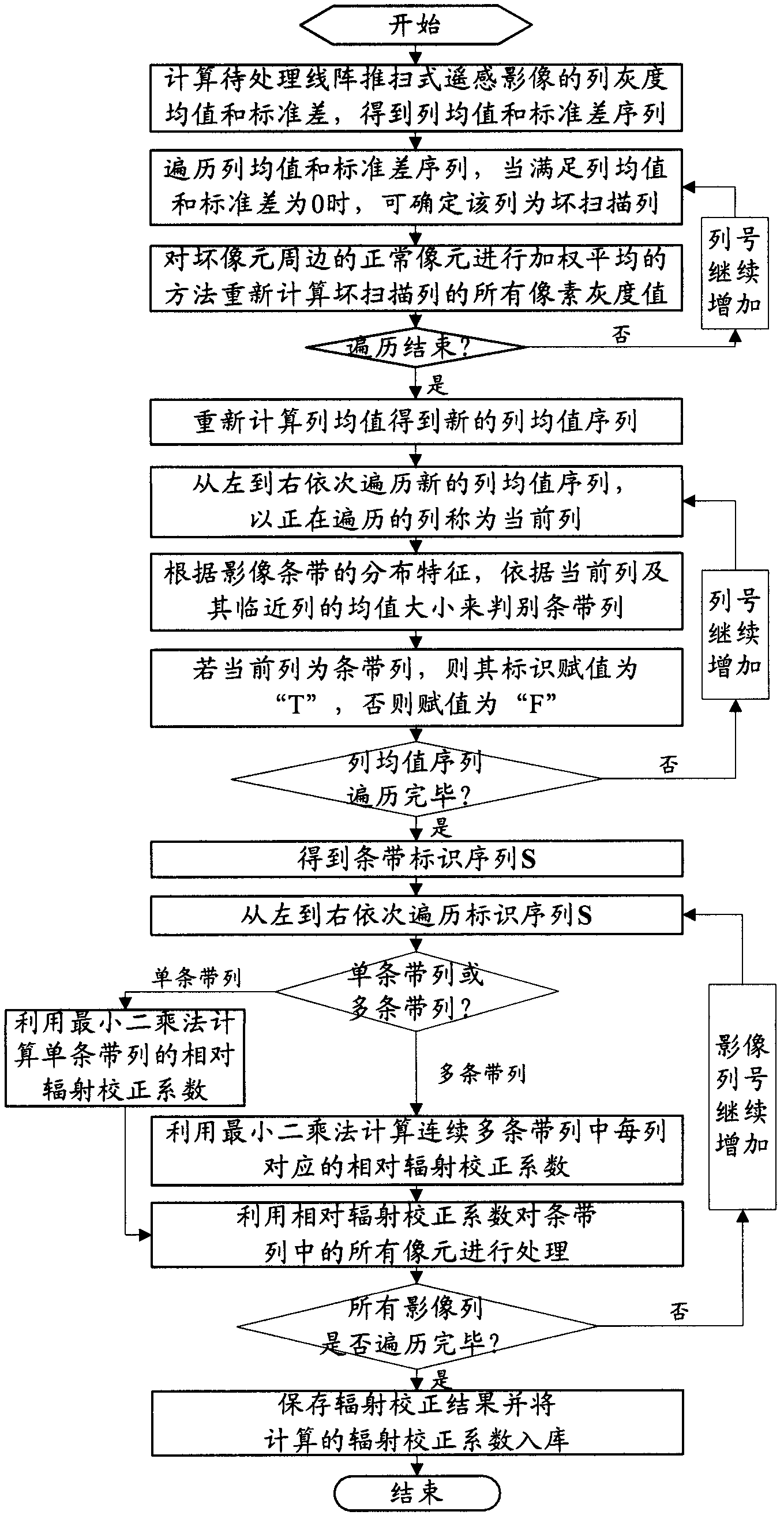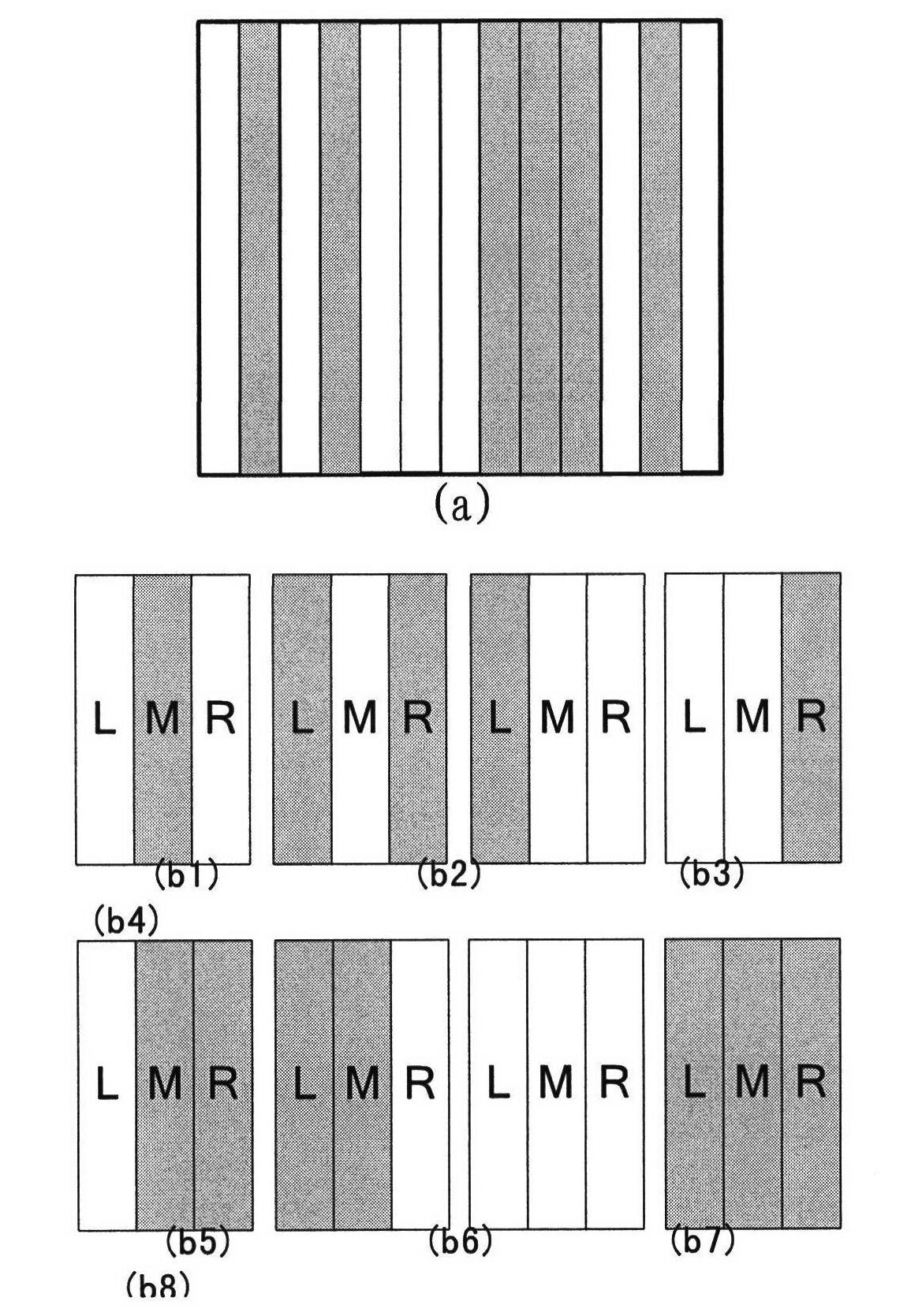Least square method-based adaptive radiation correction method for linear array push-broom image
A technique of least squares and radiation correction, applied in image enhancement, image data processing, instruments, etc., can solve the problem of loss of gray distribution
- Summary
- Abstract
- Description
- Claims
- Application Information
AI Technical Summary
Problems solved by technology
Method used
Image
Examples
Embodiment Construction
[0084] The present invention is based on the linear array push-broom image adaptive radiation correction method based on the least square method, and the specific processing flow is as follows figure 1 shown.
[0085] 1. Calculate the column gray mean and standard deviation sequence of the linear array push-broom remote sensing image
[0086] The size of the image to be processed generated by the push-broom line-scan camera is M×N pixels, M is the total number of rows of the image, N is the total number of columns of the image, and M and N are both positive integers. For the push-broom line-scan camera In terms of, the value N is also equivalent to the number of probes of the push-broom line scan camera. The average gray value m of column j in the image j and gray standard deviation v j Can be expressed as:
[0087] m j = Σ i = 1 M ...
PUM
 Login to View More
Login to View More Abstract
Description
Claims
Application Information
 Login to View More
Login to View More - R&D
- Intellectual Property
- Life Sciences
- Materials
- Tech Scout
- Unparalleled Data Quality
- Higher Quality Content
- 60% Fewer Hallucinations
Browse by: Latest US Patents, China's latest patents, Technical Efficacy Thesaurus, Application Domain, Technology Topic, Popular Technical Reports.
© 2025 PatSnap. All rights reserved.Legal|Privacy policy|Modern Slavery Act Transparency Statement|Sitemap|About US| Contact US: help@patsnap.com



